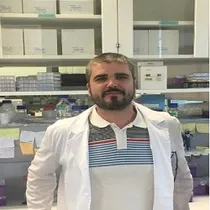Presentation

The control of cell identity entails a precise orchestration of gene expression programs. The processesses that control gene expression are responsible for generating distinct cellular identities from a single genome. Although transcription factors play a crucial role in the establishment and maintenance of transcriptional networks, their action is modulated by chromatin. This nucleoproteic structure is regulated by the combination of histone modifications, DNA methylation, histone variant deposition and nucleosome occupancy. The precise arrangement of these chromatin modifications is governed by a battery of enzymes, whose activity must be controlled precisely and dynamically.
The Polycomb machinery plays an important role in the maintenance of cell identity by promoting a chromatin state refractory to gene expression. It is composed of several families of multiprotein complexes that are proposed to work together to maintain repression (Figure 1). The two major complexes are PRC1 and PRC2, standing for Polycomb Repressive Complex 1 and 2 respectively.
PRC2 is a four-polypeptide complex, which is responsible for the deposition of H3K27me2/3. In addition to this core complex, several facultative cofactors (AEBP2, JARID2, PCL1/2/3, EPOP, EZHIP) interact with PRC2 and modulate both its enzymatic activity and its interaction with chromatin. We have a strong focus on the characterization of JARID2 and EZHIP (Figure 1), which respectively stimulate and limit PRC2 activity.
PRC1 complex compacts chromatin and deposits the mono-ubiquitination of histone H2A. This activity is counteracted by the BAP1 deubiquitinase complex. We are interested in determining how BAP1 limits the activity of PRC1. We are also studying the relative contributions of PRC1 and PRC2 to transcriptional repression.
Alterations in cell identity are required for neoplastic transformation. Not surprisingly, genetic mutations that affect the Polycomb machinery either directly (e.g. mutations in PRC2 enzymatic subunit) or indirectly (e.g. mutations of BAP1 or other chromatin modifiers that antagonize or cooperate with Polycomb proteins) are recurrent in cancers. We have developed various approaches to study how these mutations affect the epigenetic landscape and to try to identify novel therapeutic strategies to specifically target these cancers.


























